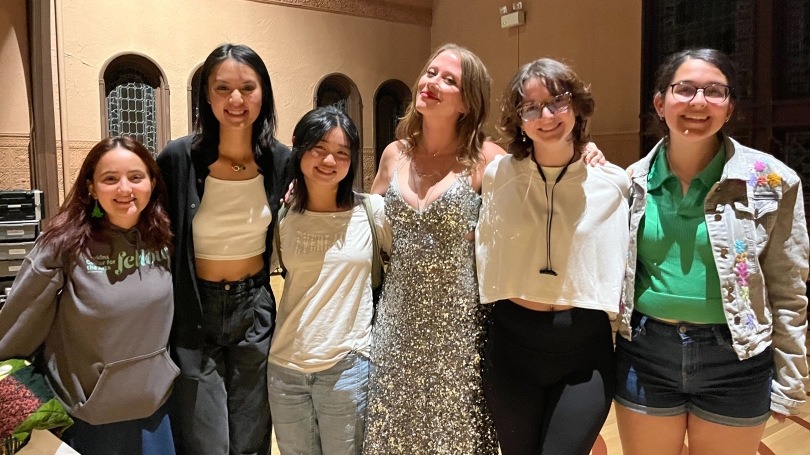The Lone Bellow Cultivates Connection
Three musicians, an instrument strapped to each. Hues of purple, green, blue, pink lighting. Voices that wail and whisper, that belt and breathe, that draw you into their anguish. A standing ovation.
Three musicians, an instrument strapped to each. Hues of purple, green, blue, pink lighting. Voices that wail and whisper, that belt and breathe, that draw you into their anguish. A standing ovation.
On October 23, The Lone Bellow, consisting of lead singer Zach Williams, guitarist Brian Elmquist and multi-instrumentalist Kanene Pipkin, took the stage at Dartmouth's Rollins Chapel. This was the band's first-ever performance in Hanover, with all three taking turns as lead singer.
For their current "By Request Only" tour, the group set up a website inviting fans to submit requests for songs to help them curate their setlist. The final set included some of the band's most popular records, such as Count on Me and Green Eyes and a Heart of Gold.
With each song they filled the chapel with a rich yet raw mosaic of sound, spotlighting the band's vocal skill, artistry and cohesion.
The three come from rather different musical backgrounds: Pipkin is "masterfully trained" and sang in a capella groups, which gave her "wonderful harmony opinions and ideas," and Elmquist, "a very musical guy," sang in a barbershop quartet when he was younger, Williams said.
"I just happen to be able to sing," Williams said.
But hearing their voices swell and fade together and effortlessly click into harmonies, one would never guess the trio hadn't been performing together their whole lives.
Whether on display during the unison a cappella opening in Wherever Your Heart Is or the guttural cries in Homesick, the band's seamless vocal blend and stage presence are a testament to the many years they have spent together, musically and otherwise.
Formed in Brooklyn, New York in 2010, the band found each other as neighbors in Park Slope, a neighborhood in Brooklyn. What eventually became The Lone Bellow started as "just a fun little side project," Williams said, who started writing 20 years ago as a way to navigate his grief when his wife became a quadriplegic. After his friends encouraged him to learn to sing and play the guitar simultaneously, he performed at an open mic—and hasn't turned back since.
"I fell in love with the kindness of strangers and what can happen in a room," Williams said.
Fourteen years and six albums later, the band's collaboration has cultivated not only a beloved discography and a devoted fan base, but also an unparalleled connection with each other.
"I think that collaboration can lead to interesting creativity," Williams said. "You got to know how to fight there, you got to know how to take care of each other, you got to know how to have fun, and you got to relearn those things on a daily basis."
For a few select songs, the band stepped down in front of the stage, electing to perform mic-less. In these moments, the trio harnessed their power to create a rare intimacy, not only with each other, but also with their audience.
As I sat there just a few feet away from The Lone Bellow, I felt like I could not soak up enough of the magic of the moment. There was no space—physical or emotional— between the band and the crowd. Just their voices, their instruments, their stories and the people there to hear them.
Then the band agreed to play an audience request—but with one caveat: the song would only work, they said, if the audience sang the harmonies with them and became "a congregation."
Elmquist and Pipkin taught the left and right side of the audience their different harmonizations, and the audience chimed in, singing our ascending "ah"s back to the stage.
For a moment, the entire room was singing. We were part of a reciprocated activity, a give-and-take, a collective sharing of art, of emotion. And perhaps that was the band's goal all along.
"I hope that our shows will encourage people to make their own stuff," Williams said. "I hope that people walk away from our shows like, 'Man, I want to do that adventure,' or 'I want to paint that painting.'"
